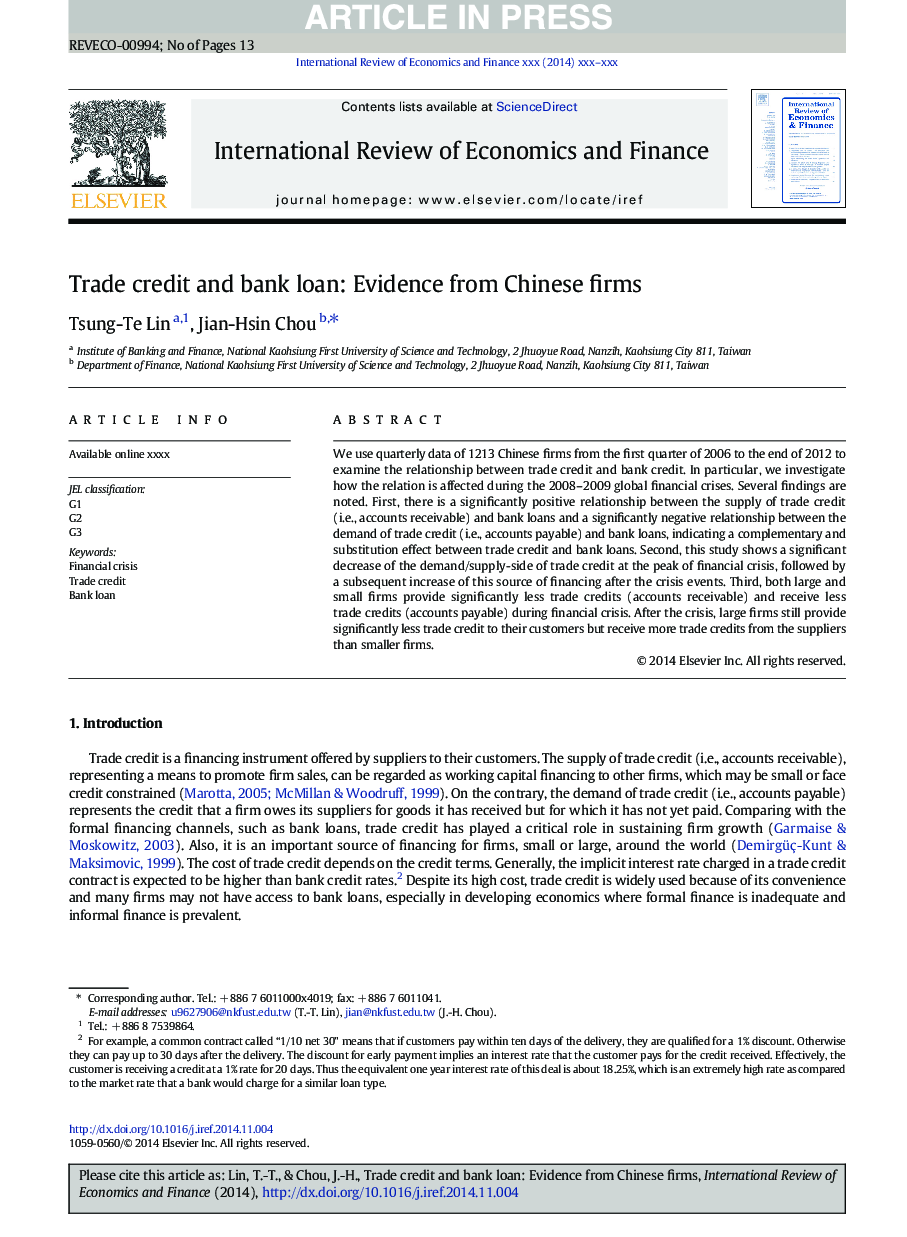| Article ID | Journal | Published Year | Pages | File Type |
|---|---|---|---|---|
| 5083543 | International Review of Economics & Finance | 2015 | 13 Pages |
Abstract
We use quarterly data of 1213 Chinese firms from the first quarter of 2006 to the end of 2012 to examine the relationship between trade credit and bank credit. In particular, we investigate how the relation is affected during the 2008-2009 global financial crises. Several findings are noted. First, there is a significantly positive relationship between the supply of trade credit (i.e., accounts receivable) and bank loans and a significantly negative relationship between the demand of trade credit (i.e., accounts payable) and bank loans, indicating a complementary and substitution effect between trade credit and bank loans. Second, this study shows a significant decrease of the demand/supply-side of trade credit at the peak of financial crisis, followed by a subsequent increase of this source of financing after the crisis events. Third, both large and small firms provide significantly less trade credits (accounts receivable) and receive less trade credits (accounts payable) during financial crisis. After the crisis, large firms still provide significantly less trade credit to their customers but receive more trade credits from the suppliers than smaller firms.
Related Topics
Social Sciences and Humanities
Economics, Econometrics and Finance
Economics and Econometrics
Authors
Tsung-Te Lin, Jian-Hsin Chou,
